We practice a minimally invasive approach to your foot or ankle problem with surgery as the last option
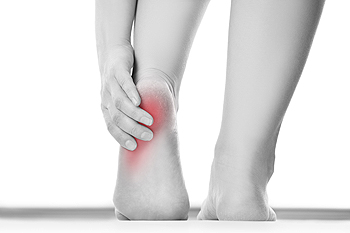 If you’ve ever had a plantar wart, you are most likely aware of the intense pain and tenderness that is typically experienced while walking. It is known to be caused by the human papillomavirus, which is also referred to as HPV. This particular type of virus typically affects the heel of the foot, and will grow inward as a result of the pressure the heel endures from everyday activities such as walking. The appearance can be a small area with thickened skin and may sometimes have black dots in the center. Treatment options may include utilizing liquid nitrogen that will freeze the wart off, salicylic acid cream, which may be used to burn the wart off, or specific medicine that is applied directly to the wart. It’s important to have a podiatrist properly diagnose your plantar wart to determine what the best course of treatment is for you.
If you’ve ever had a plantar wart, you are most likely aware of the intense pain and tenderness that is typically experienced while walking. It is known to be caused by the human papillomavirus, which is also referred to as HPV. This particular type of virus typically affects the heel of the foot, and will grow inward as a result of the pressure the heel endures from everyday activities such as walking. The appearance can be a small area with thickened skin and may sometimes have black dots in the center. Treatment options may include utilizing liquid nitrogen that will freeze the wart off, salicylic acid cream, which may be used to burn the wart off, or specific medicine that is applied directly to the wart. It’s important to have a podiatrist properly diagnose your plantar wart to determine what the best course of treatment is for you.
Plantar warts can be very uncomfortable. If you need your feet checked, contact Dr. David Ungar from Personal Foot Care. Our doctor will assist you with all of your foot and ankle needs.
About Plantar Warts
Plantar warts are the result of HPV, or human papillomavirus, getting into open wounds on the feet. They are mostly found on the heels or balls of the feet.
While plantar warts are generally harmless, those experiencing excessive pain or those suffering from diabetes or a compromised immune system require immediate medical care. Plantar warts are easily diagnosed, usually through scraping off a bit of rough skin or by getting a biopsy.
Symptoms
Treatment
To help prevent developing plantar warts, avoid walking barefoot over abrasive surfaces that can cause cuts or wounds for HPV to get into. Avoiding direct contact with other warts, as well as not picking or rubbing existing warts, can help prevent the further spread of plantar warts. However, if you think you have developed plantar warts, speak to your podiatrist. He or she can diagnose the warts on your feet and recommend the appropriate treatment options.
If you have any questions please feel free to contact our office located in Farmington, MI . We offer the newest diagnostic and treatment technologies for all your foot and ankle needs.
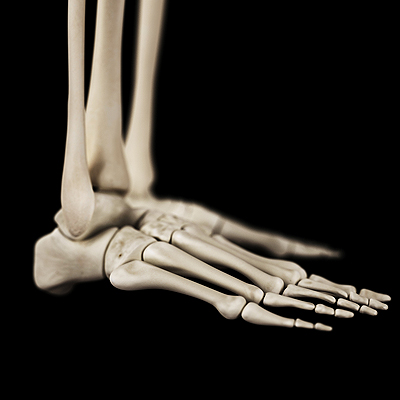 If you have flat feet, you may have noticed the arches in your feet are nonexistent. This condition is also referred to as fallen arches, and the feet may experience pain and discomfort. This is evident because the foot will lie completely flat on the floor, and may roll inward. There may be several reasons for this to occur, including arthritic conditions that may affect the joints and tendons, obesity, which puts additional pressure on the feet, and weakness of the nerves due to diabetes. Some of the symptoms that may be experienced can include stiffness in the foot, pain inside the ankle, or possibly a feeling of imbalance. Performing specific foot exercises may be helpful in alleviating the discomfort that may be associated with flat feet. If you have this condition, it’s suggested to schedule a consultation with a podiatrist who can suggest treatment options.
If you have flat feet, you may have noticed the arches in your feet are nonexistent. This condition is also referred to as fallen arches, and the feet may experience pain and discomfort. This is evident because the foot will lie completely flat on the floor, and may roll inward. There may be several reasons for this to occur, including arthritic conditions that may affect the joints and tendons, obesity, which puts additional pressure on the feet, and weakness of the nerves due to diabetes. Some of the symptoms that may be experienced can include stiffness in the foot, pain inside the ankle, or possibly a feeling of imbalance. Performing specific foot exercises may be helpful in alleviating the discomfort that may be associated with flat feet. If you have this condition, it’s suggested to schedule a consultation with a podiatrist who can suggest treatment options.
Flatfoot is a condition many people suffer from. If you have flat feet, contact Dr. David Ungar from Personal Foot Care. Our doctor will treat your foot and ankle needs.
What Are Flat Feet?
Flatfoot is a condition in which the arch of the foot is depressed and the sole of the foot is almost completely in contact with the ground. About 20-30% of the population generally has flat feet because their arches never formed during growth.
Conditions & Problems:
Having flat feet makes it difficult to run or walk because of the stress placed on the ankles.
Alignment – The general alignment of your legs can be disrupted, because the ankles move inward which can cause major discomfort.
Knees – If you have complications with your knees, flat feet can be a contributor to arthritis in that area.
Symptoms
Treatment
If you are experiencing pain and stress on the foot you may weaken the posterior tibial tendon, which runs around the inside of the ankle.
If you have any questions please feel free to contact our office located in Farmington, MI . We offer the newest diagnostic and treatment technologies for all your foot and ankle needs.
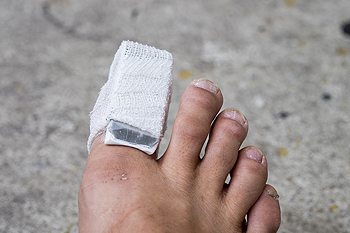 Broken toes are typically the result of a heavy object falling on your foot or from severely stubbing your toe. Common symptoms may include intense pain, swelling and bruising. In harsher fractures, the bones in the toe may become displaced, and this may cause the toe to appear deformed. To determine if a fracture has occurred, an X-ray is generally performed, and this will show the severity of the break. It’s important to rest the foot, and elevating it above heart level will slow blood flow to the affected area, which may aid in diminishing any swelling. Keeping any weight off the foot by using crutches may be beneficial in healing the toe, in addition to putting the toe in a splint for stability. If you feel you have broken your toe, please schedule a consultation with a podiatrist who can perform the correct treatment for this condition.
Broken toes are typically the result of a heavy object falling on your foot or from severely stubbing your toe. Common symptoms may include intense pain, swelling and bruising. In harsher fractures, the bones in the toe may become displaced, and this may cause the toe to appear deformed. To determine if a fracture has occurred, an X-ray is generally performed, and this will show the severity of the break. It’s important to rest the foot, and elevating it above heart level will slow blood flow to the affected area, which may aid in diminishing any swelling. Keeping any weight off the foot by using crutches may be beneficial in healing the toe, in addition to putting the toe in a splint for stability. If you feel you have broken your toe, please schedule a consultation with a podiatrist who can perform the correct treatment for this condition.
A broken toe can be very painful and lead to complications if not properly fixed. If you have any concerns about your feet, contact Dr. David Ungar from Personal Foot Care. Our doctor will treat your foot and ankle needs.
What to Know About a Broken Toe
Although most people try to avoid foot trauma such as banging, stubbing, or dropping heavy objects on their feet, the unfortunate fact is that it is a common occurrence. Given the fact that toes are positioned in front of the feet, they typically sustain the brunt of such trauma. When trauma occurs to a toe, the result can be a painful break (fracture).
Symptoms of a Broken Toe
Generally, it is best to stay off of the injured toe with the affected foot elevated.
Severe toe fractures may be treated with a splint, cast, and in some cases, minor surgery. Due to its position and the pressure it endures with daily activity, future complications can occur if the big toe is not properly treated.
If you have any questions please feel free to contact our office located in Farmington, MI . We offer the newest diagnostic and treatment technologies for all your foot and ankle needs.
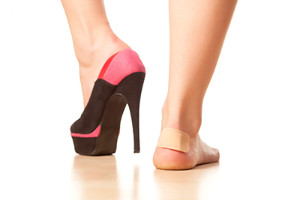 Wearing high heels may negate the fact that the feet act as shock absorbers. If proper shoes are worn, cushioning in the soles of the shoes generally protects the body from the constant battering incurred while walking and running. However, if the choice to wear high heels is made, the body’s weight shifts onto the balls of the feet, forcing the toes to be crammed into a small area and potentially resulting in all kinds of conditions. There are typically several reasons to avoid wearing high heels, one of which is abnormal movement occurring in the ankles. This can result from the foot being forced to bend forward, possibly restricting circulation in the feet. Additionally, the Achilles tendon is often affected which may cause pain in the calves. If high heels are consistently worn, the ankle and calf tendons may lose flexibility, making it difficult to walk. Good advice is to wear high heels as little as possible.
Wearing high heels may negate the fact that the feet act as shock absorbers. If proper shoes are worn, cushioning in the soles of the shoes generally protects the body from the constant battering incurred while walking and running. However, if the choice to wear high heels is made, the body’s weight shifts onto the balls of the feet, forcing the toes to be crammed into a small area and potentially resulting in all kinds of conditions. There are typically several reasons to avoid wearing high heels, one of which is abnormal movement occurring in the ankles. This can result from the foot being forced to bend forward, possibly restricting circulation in the feet. Additionally, the Achilles tendon is often affected which may cause pain in the calves. If high heels are consistently worn, the ankle and calf tendons may lose flexibility, making it difficult to walk. Good advice is to wear high heels as little as possible.
High heels have a history of causing foot and ankle problems. If you have any concerns about your feet or ankles, contact Dr. David Ungar from Personal Foot Care. Our doctor can provide the care you need to keep you pain-free and on your feet.
Effects of High Heels on the Feet
High heels are popular shoes among women because of their many styles and societal appeal. Despite this, high heels can still cause many health problems if worn too frequently.
Which Parts of My Body Will Be Affected by High Heels?
What Kinds of Foot Problems Can Develop from Wearing High Heels?
How Can I Still Wear High Heels and Maintain Foot Health?
If you want to wear high heeled shoes, make sure that you are not wearing them every day, as this will help prevent long term physical problems. Try wearing thicker heels as opposed to stilettos to distribute weight more evenly across the feet. Always make sure you are wearing the proper shoes for the right occasion, such as sneakers for exercising. If you walk to work, try carrying your heels with you and changing into them once you arrive at work. Adding inserts to your heels can help cushion your feet and absorb shock. Full foot inserts or metatarsal pads are available.
If you have any questions please feel free to contact our office located in Farmington, MI . We offer the newest diagnostic and treatment technologies for all your foot and ankle needs.
When a toe is affected by the nail pressing into the skin, this condition is referred to as an ingrown toenail. This condition affects not only grown adults, but children and babies as well. Your baby may cry when the big toe rubs against a shoe or sock, and the tender skin will often be painful. A blister may emerge, and if an infection occurs, the discharge will be yellowish in color if it breaks. To prevent this condition, it’s recommended to use a nail clipper instead of scissors, which allows the nail to be cut straight across. Babies' feet typically grow fast, so it’s crucial to check the fit of the shoes and socks often. A consultation with a podiatrist may be advised for treatment options, which may include administering an antibiotic and possibly trimming the nail away from the skin.
Ingrown toenails can become painful if they are not treated properly. For more information about ingrown toenails, contact Dr. David Ungar of Personal Foot Care. Our doctor can provide the care you need to keep you pain-free and on your feet.
Ingrown Toenails
Ingrown toenails occur when a toenail grows sideways into the bed of the nail, causing pain, swelling, and possibly infection.
Causes
Prevention
Because ingrown toenails are not something found outside of shoe-wearing cultures, going barefoot as often as possible will decrease the likeliness of developing ingrown toenails. Wearing proper fitting shoes and using proper cutting techniques will also help decrease your risk of developing ingrown toenails.
Treatment
Ingrown toenails are a very treatable foot condition. In minor cases, soaking the affected area in salt or antibacterial soaps will not only help with the ingrown nail itself, but also help prevent any infections from occurring. In more severe cases, surgery is an option. In either case, speaking to your podiatrist about this condition will help you get a better understanding of specific treatment options that are right for you.
If you have any questions please feel free to contact our office located in Farmington, MI . We offer the newest diagnostic and treatment technologies for all your foot and ankle needs.
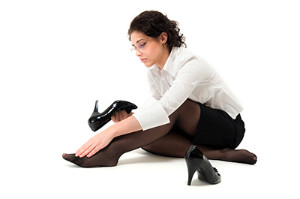 Wearing high heels commonly causes pain in the feet because the foot is forced into an unnatural position. Typically the top of the foot is put into an awkward position, as the heel is higher than the toes. Furthermore, the toes are usually forced into the small toe box and become cramped. Because of all this, the muscles around the ankles are commonly affected. Posture has to be continually changed to maintain balance, as high heels tend to push the center of gravity forward. Chronic wearers may develop short muscles and tendons and may notice this when flat shoes are worn, resulting in pain in the calves. Recent research may suggest that the risk of arthritis is increased the longer high heels are worn. Some solutions include wearing thicker heels to promote balance, keeping the heels lower, and wearing soft insoles. Stretching exercises for the feet and calves are also recommended. Finally, try to avoid wearing heels for long periods of time and only wear them for special events.
Wearing high heels commonly causes pain in the feet because the foot is forced into an unnatural position. Typically the top of the foot is put into an awkward position, as the heel is higher than the toes. Furthermore, the toes are usually forced into the small toe box and become cramped. Because of all this, the muscles around the ankles are commonly affected. Posture has to be continually changed to maintain balance, as high heels tend to push the center of gravity forward. Chronic wearers may develop short muscles and tendons and may notice this when flat shoes are worn, resulting in pain in the calves. Recent research may suggest that the risk of arthritis is increased the longer high heels are worn. Some solutions include wearing thicker heels to promote balance, keeping the heels lower, and wearing soft insoles. Stretching exercises for the feet and calves are also recommended. Finally, try to avoid wearing heels for long periods of time and only wear them for special events.
High heels have a history of causing foot and ankle problems. If you have any concerns about your feet or ankles, contact Dr. David Ungar from Personal Foot Care. Our doctor can provide the care you need to keep you pain-free and on your feet.
Effects of High Heels on the Feet
High heels are popular shoes among women because of their many styles and societal appeal. Despite this, high heels can still cause many health problems if worn too frequently.
Which Parts of My Body Will Be Affected by High Heels?
What Kinds of Foot Problems Can Develop from Wearing High Heels?
How Can I Still Wear High Heels and Maintain Foot Health?
If you want to wear high heeled shoes, make sure that you are not wearing them every day, as this will help prevent long term physical problems. Try wearing thicker heels as opposed to stilettos to distribute weight more evenly across the feet. Always make sure you are wearing the proper shoes for the right occasion, such as sneakers for exercising. If you walk to work, try carrying your heels with you and changing into them once you arrive at work. Adding inserts to your heels can help cushion your feet and absorb shock. Full foot inserts or metatarsal pads are available.
If you have any questions please feel free to contact our office located in Farmington, MI . We offer the newest diagnostic and treatment technologies for all your foot and ankle needs.
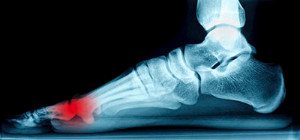 The sesamoid bones act like a pulley that enables the big toe to move normally. The sesamoids also absorb the weight placed on the ball of the foot. Turf toe occurs when the soft tissue surrounding the big toe is injured, which can cause sharp pain. Sesamoiditis is caused from pressure often resulting from inflammation of the sesamoid bones. This inflammation often occurs from overuse in athletic activities. People with high arches may be prone to developing sesamoiditis, as are frequent wearers of high heels. It is recommended to see a podiatrist for sesamoiditis, as they can properly diagnose and treat it.
The sesamoid bones act like a pulley that enables the big toe to move normally. The sesamoids also absorb the weight placed on the ball of the foot. Turf toe occurs when the soft tissue surrounding the big toe is injured, which can cause sharp pain. Sesamoiditis is caused from pressure often resulting from inflammation of the sesamoid bones. This inflammation often occurs from overuse in athletic activities. People with high arches may be prone to developing sesamoiditis, as are frequent wearers of high heels. It is recommended to see a podiatrist for sesamoiditis, as they can properly diagnose and treat it.
Sesamoiditis is an unpleasant foot condition characterized by pain in the balls of the feet. If you think you’re struggling with sesamoiditis, contact Dr. David Ungar of Personal Foot Care. Our doctor will treat your condition thoroughly and effectively.
Sesamoiditis
Sesamoiditis is a condition of the foot that affects the ball of the foot. It is more common in younger people than it is in older people. It can also occur with people who have begun a new exercise program, since their bodies are adjusting to the new physical regimen. Pain may also be caused by the inflammation of tendons surrounding the bones. It is important to seek treatment in its early stages because if you ignore the pain, this condition can lead to more serious problems such as severe irritation and bone fractures.
Causes of Sesamoiditis
Treatment for sesamoiditis is non-invasive and simple. Doctors may recommend a strict rest period where the patient forgoes most physical activity. This will help give the patient time to heal their feet through limited activity. For serious cases, it is best to speak with your doctor to determine a treatment option that will help your specific needs.
If you have any questions please feel free to contact our office located in Farmington, MI . We offer the newest diagnostic and treatment technologies for all your foot and ankle needs.
 Swollen feet among pregnant women is a very common and normal condition. However, it can be very uncomfortable for women and should be monitored closely. The feet become swollen most often in the third trimester due to increased blood pressure and fluids in the lower body. The swelling tends to worsen during the day but can decrease or go away after a night of sleep. Sometimes, the swelling can spread to other parts of the body such as the thighs, hands and face. If the swelling spreads, it is important to see a doctor, as this could be a sign of potentially serious conditions. While you can’t get rid of swollen feet, consuming less salt, avoiding the consumption of too much liquid, and getting enough vitamins can help reduce the swelling. If your feet are swollen and are causing you pain, it is recommended to see a podiatrist for treatment.
Swollen feet among pregnant women is a very common and normal condition. However, it can be very uncomfortable for women and should be monitored closely. The feet become swollen most often in the third trimester due to increased blood pressure and fluids in the lower body. The swelling tends to worsen during the day but can decrease or go away after a night of sleep. Sometimes, the swelling can spread to other parts of the body such as the thighs, hands and face. If the swelling spreads, it is important to see a doctor, as this could be a sign of potentially serious conditions. While you can’t get rid of swollen feet, consuming less salt, avoiding the consumption of too much liquid, and getting enough vitamins can help reduce the swelling. If your feet are swollen and are causing you pain, it is recommended to see a podiatrist for treatment.
Pregnant women with swollen feet can be treated with a variety of different methods that are readily available. For more information about other cures for swollen feet during pregnancy, consult with Dr. David Ungar from Personal Foot Care. Our doctor will attend to all of your foot and ankle needs.
What Foot Problems Can Arise During Pregnancy?
One problem that can occur is overpronation, which occurs when the arch of the foot flattens and tends to roll inward. This can cause pain and discomfort in your heels while you’re walking or even just standing up, trying to support your baby.
Another problem is edema, or swelling in the extremities. This often affects the feet during pregnancy but tends to occur in the later stages.
How Can I Keep My Feet Healthy During Pregnancy?
If you have any questions please feel free to contact our office located in Farmington, MI . We offer the newest diagnostic and treatment technologies for all your foot and ankle needs.
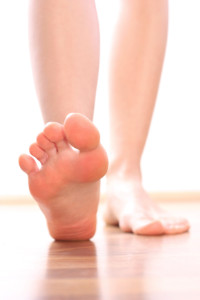 A new injection therapy under development by Centrexion Therapeutics has been fast-tracked by the FDA as having great potential in treating Morton’s neuroma. This condition has no FDA approved treatment and Centrexion hopes to change this. Morton’s neuroma is an inflammation of the nerve in the ball of the foot which can cause sharp and burning pain. This is common among women who wear high heels. The drug, known currently as CNTX-4975, treats Morton’s neuroma by being directly injected into the site of the pain. This treatment deactivates the nerve receptor in the foot, which stops the pain without surgical removal of the nerve. The FDA has yet to approve the treatment but that could change within the next few years.
A new injection therapy under development by Centrexion Therapeutics has been fast-tracked by the FDA as having great potential in treating Morton’s neuroma. This condition has no FDA approved treatment and Centrexion hopes to change this. Morton’s neuroma is an inflammation of the nerve in the ball of the foot which can cause sharp and burning pain. This is common among women who wear high heels. The drug, known currently as CNTX-4975, treats Morton’s neuroma by being directly injected into the site of the pain. This treatment deactivates the nerve receptor in the foot, which stops the pain without surgical removal of the nerve. The FDA has yet to approve the treatment but that could change within the next few years.
Morton’s neuroma is a very uncomfortable condition to live with. If you think you have Morton’s neuroma, contact Dr. David Ungar of Personal Foot Care. Our doctor will attend to all of your foot care needs and answer any of your related questions.
Morton’s Neuroma
Morton's neuroma is a painful foot condition that commonly affects the areas between the second and third or third and fourth toe, although other areas of the foot are also susceptible. Morton’s neuroma is caused by an inflamed nerve in the foot that is being squeezed and aggravated by surrounding bones.
What Increases the Chances of Having Morton’s Neuroma?
Morton’s neuroma is a very treatable condition. Orthotics and shoe inserts can often be used to alleviate the pain on the forefront of the feet. In more severe cases, corticosteroids can also be prescribed. In order to figure out the best treatment for your neuroma, it’s recommended to seek the care of a podiatrist who can diagnose your condition and provide different treatment options.
If you have any questions, please feel free to contact our office located in Farmington, MI . We offer the newest diagnostic and treatment technologies for all your foot care needs.
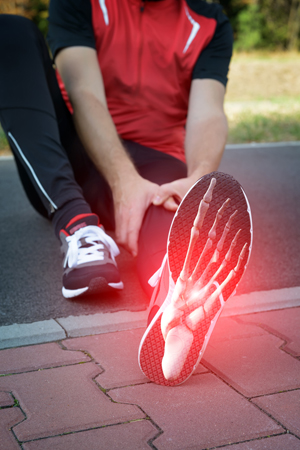 If you are a runner, there are certain rules that you should follow in order to prevent yourself from becoming injured. One of the most important things you can do is to wear shoes that fit properly, and to use shoe inserts when necessary. Proper shoes will help correct foot-motion issues that could potentially lead to injury. Another tip is to pay attention to any pain you are experiencing in your feet. If you sense that there is a pain in your feet, you should take a break and figure out what is going on so that you can treat it.
If you are a runner, there are certain rules that you should follow in order to prevent yourself from becoming injured. One of the most important things you can do is to wear shoes that fit properly, and to use shoe inserts when necessary. Proper shoes will help correct foot-motion issues that could potentially lead to injury. Another tip is to pay attention to any pain you are experiencing in your feet. If you sense that there is a pain in your feet, you should take a break and figure out what is going on so that you can treat it.
Exercising your feet regularly with the proper foot wear is a great way to prevent injuries. If you have any concerns about your feet, contact Dr. David Ungar of Personal Foot Care. Our doctor will treat your foot and ankle needs.
How to Prevent Running Injuries
Many common running injuries are caused by overuse and overtraining. When the back of the kneecap starts wearing out and starts causing pain in your knee, this is commonly referred to as runner’s knee. Runner’s knee is a decrease in strength in your quadriceps and can occur if you’re not wearing properly fitted or supporting shoes. To prevent runner’s knee, focusing on hip strengthening is a good idea, as well as strengthening your quads to keep the kneecaps aligned.
What Are Some Causes of Running Injuries?
- One cause of a common running injury is called iliotibial band syndrome.
- Plantar fasciitis is also another common injury.
- Stress fractures can occur from overtraining, lack of calcium, or even your running style.
Best Ways to Prevent Running Injuries
- Wear footwear that fits properly and suits your running needs.
- Running shoes are the only protective gear that runners have to safeguard them from injury.
- Make a training schedule. Adding strengthening exercises as well as regular stretching can help keep you strong and limber and can lessen the possibility of injuries.
- Stretching keeps muscles limber; this will help you gain better flexibility.
If you have any questions please feel free to contact our office located in Farmington, MI . We offer the newest diagnostic and treatment technologies for all your foot and ankle needs.
Connect With Us
